It’s exciting trying out something new, especially when aquaponics gives you such a great opportunity to be a successful gardener and feed your family organic produce!
But, as with everything, there are plenty of things to learn; getting them right in your aquaponics system will ensure that you have a system that needs little maintenance. Choosing a grow bed and tank is relatively simple, but the array of choices for aquaponics grow media is likely to leave you baffled.
That’s why I’m here; to help you understand what it is, what choices are available, and which is going to best suit your needs.
What is Grow Media?
The first thing to understand is what the grow media is actually for. Before you go any further it is important to note that not all systems use grow media. For example, the floating raft system simply has plants on rafts with their roots dangling in the water.
But, once you understand the power of aquaponics grow media you’ll realize why you do want it in your system:
- A substance to keep roots in
In order for a plant to grow and become well established it needs a strong root structure. This allows it to absorb the nutrients it needs and ensures it remains in position. In nature, strong roots prevent the plant from falling over or being removed in bad weather.
Your aquaponics system may be protected from the elements but strong roots are still essential to allow the plant to grow and support its own weight.
The aquaponics grow bed material acts in the same way as soil; providing the plant with stability and nutritional access. Grow media is perfect for plants that need a strong root system. Try growing a papaya tree in a DWC or NFT system!
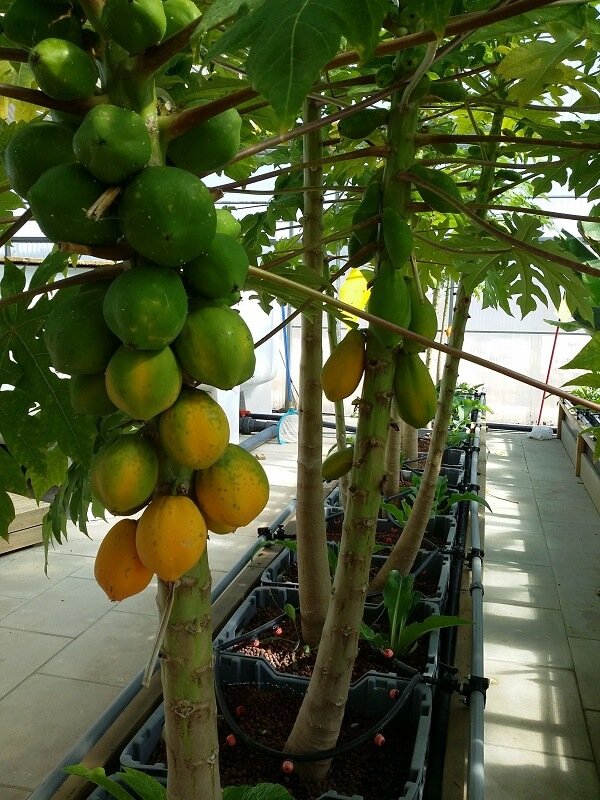
- Surface area for bacteria
In an aquaponics system, you need to have bacteria. These convert the fish waste, (ammonia), into nitrites and then nitrates; which can be used by the plants as nutrition.
However, in order for this process to occur the nitrifying bacteria need to have a surface to cling to. In flood and drain systems, that’s the grow media. The larger the surface area (BSA), the greater the number of bacteria, and the better the ammonia conversion rate. Learn to calculate the total surface area (BSA) for your system in my book.
You can achieve a large surface area by using small grow media or larger quantities of bigger grow media. That’s why you need to know the different types and which may work best for your system.
In a flood and drain system, grow media is used for:
- Supporting a big root system
- Provide surface area for the bacteria
In a deep water culture system (DWC) or a nutrient film technique (NFT), a biofilter is used to house bacteria.
Requirements for Grow Media
Almost anything could be used as your aquaponics grow media but there are a few things that you should consider before you select the best option:
- Easy on the hands
You’re going to need to handle the grow media, specifically to position it in your grow bed. This means you want something easy on the hands that you’re happy to work with. For example, lava rocks are porous with a large surface area. But, they are also sharp and can cut your hands.
- Affordable
You also need to consider the cost. It can vary considerably depending on which type of aquaponics grow media you’d like to use. Hydroton is a particularly expensive example while gravel tends to be the cheapest. If you’re just starting out it’s important to balance your budget against your anticipated results.
- Ph neutral
It is essential to control the Ph level in your system; this is something you’ll need to do daily. Your fish and your plants will have their own preferred pH range, ideally, you should choose fish and plants that have a similar range (a pH of 7 is good once the system is established).
However, you also need to consider that some grow media can alter the pH of your system; potentially limiting plant growth and even hurting your fish. That’s why it’s best to avoid limestone; it is often used to raise pH levels and it’s very good at it.
In fact, it’s a good idea to test your grow media with vinegar before you put it in your system. It’s really easy to do. Simply wash your grow media thoroughly and then place it in a container with enough vinegar to cover it.
If you see bubbles this means the pH is on the high side. The bubbles are a reaction of vinegar with limestone; the greater the amount of bubbles the higher the limestone content is. No bubbles mean its pH neutral which is great; it will make it much easier to regulate the pH level in your system.
- Good Surface Area
As already mentioned, the greater the surface area of your media the more room there is for bacteria and the better your system will be at converting ammonia to nitrates.
The different types of media will offer differing surface areas; you’ll have to consider what is best suited for the size of your system.
- Decomposition
It is important to verify that your chosen aquaponics grow media will not break down and decompose in your system. This will reduce the area for bacteria and potentially cause blockages or anaerobic pockets in your grow media; these can be very damaging to your plants.
Different Grow Media
Let’s check out the most popular aquaponics grow media choices:
Lava rocks
- Lots of surface area
- Hard on the hands
Lava rock is formed when red hot lava cools very quickly. In the process, the air pockets are trapped inside the lava rock. This dramatically increases the surface area of the lava rocks.
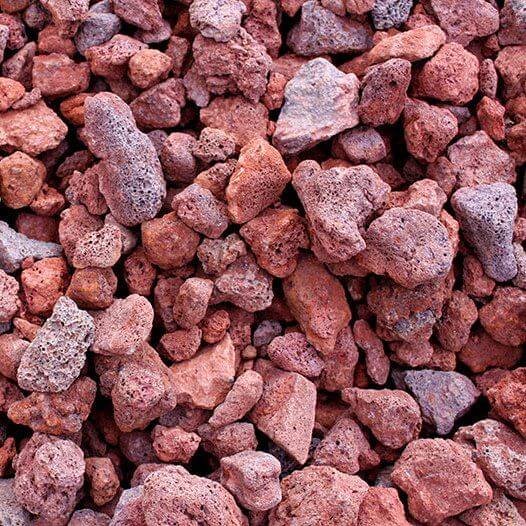
It also ensures the rocks are lightweight and you’ll find they offer great drainage. They are also usually pH neutral. But, they are sharp; your hands are likely to get cut when touching them. In addition, this sharpness can cause damage to some plant roots.
They are a good option but not necessarily the best one.
Hydroton, clay pebbles or expanded clay
- Lots of surface area
- Expensive
Hydroton is actually an expanded clay product. Clay is a great option for growing virtually any plant; it is full of microscopic holes that allow it to provide good drainage while holding enough water to keep your plants happy.
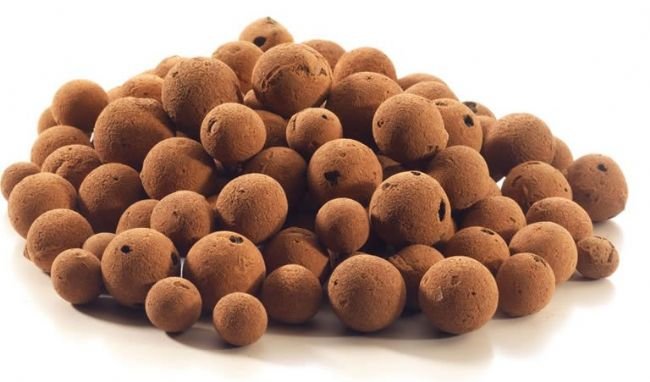
These tiny holes dramatically increase the surface area of this grow media and help to ensure there are plenty of nitrifying bacteria for your aquaponics system.
It also retains its shape, encouraging maximum airflow and is, surprisingly, pH neutral.
It is also one of the most expensive options and tends to float when first used; potentially causing blockages in your pipes and filters.
River rock
- Cheap
- Readily available
- Heavy
River rock is generally round; it has been shaped by the flow of the river over it. This is one of the cheapest options, you should be able to pick it up at your local store. It is advisable to go for a medium grade, too small and it has the potential to clog up the growbeds. Of course, go large and you won’t have the surface area you desire.
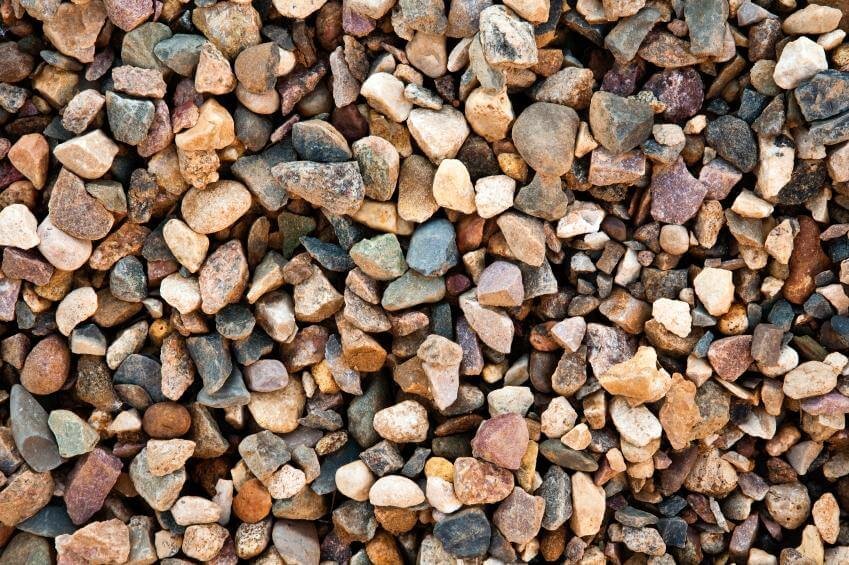
This is a good media for anyone starting out in aquaponics but don’t forget that it is relatively heavy; you’ll need to make sure your grow bed can handle the weight.
You will need to wash it and check it’s pH before you use it. There is a high probability it will have limestone in it which will increase your pH levels.
Pea gravel
- Lots of surface area
- Might clog up grow bed faster because it’s small
- The danger of limestone
Pea gravel is usually the cheapest option available, but, you’ll need to confirm what the gravel is made from. It is called pea gravel because of the size of each piece; it can be made from virtually any material.
You’ll need to verify that it’s something like quartz, limestone pea gravel is not a good idea! Whichever one you choose make sure you test it for limestone, if the result is positive, don’t use it.
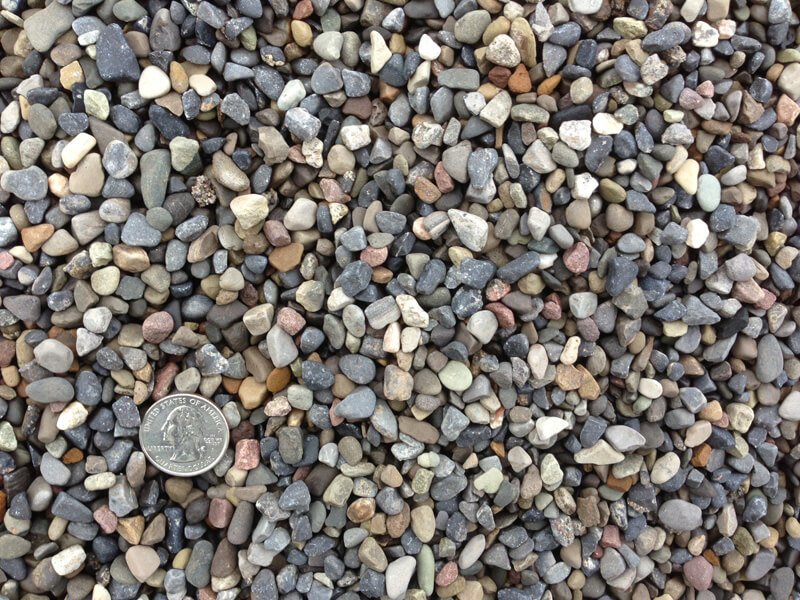
The small size of it gives you a large surface area for bacteria, but you’ll need to take precautions to ensure pea gravel doesn’t create anaerobic zones in your growbed.
Expanded Shale
- Lots of surface area
- Hard on the hands
This is a natural shale that is heated to approximately 2000°F. In the process the shale will expand, creating hundreds of tiny air pockets inside. This increases the porous nature of the grow medium and the surface area.
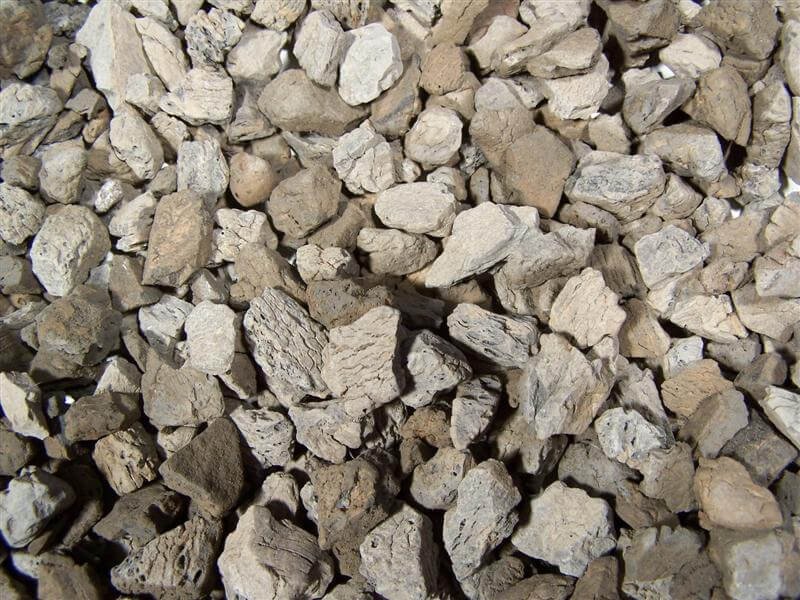
This product is nearly as cheap as pea gravel, making it an attractive and viable option. The good news is that, due to the heating process, the sharp edges are melted away; you won’t cut your hands handling this.
Growstones or Hydro stones
The final option on this list is grow stones. These are actually lightweight, porous, recycled glass products. The preparation process ensures the grow stones are pH neutral. In fact, the creation process ensures they have plenty of pores for nitrifying bacteria.
- Lots of surface area
- Ph neutral
- Not readily available
- Rough on the hands
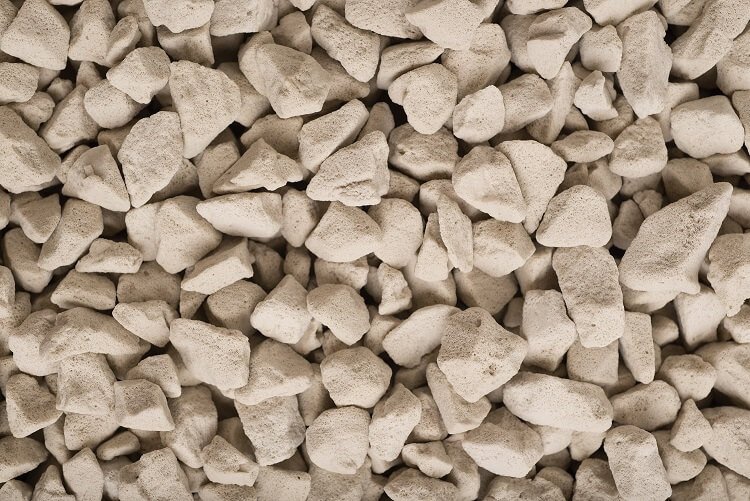
But, it is important to note that they have a surface similar to sandpaper; you’ll have to be careful handling it and verify that you’re fish are okay with this type of media.
If you can afford it, go with expanded clay.
If you can’t or don’t want to spend the money, river rock is the best choice.
Which grow media doesn’t work?
Most media options are effective when used in an aquaponics system. But there are several notable exceptions:
- Sand
Sand is very fine which will mean it will have a great amount of surface area for your bacteria. But sand will clog up your growbed causing anaerobic zones (zones without oxygen) and kill your beneficial bacteria.
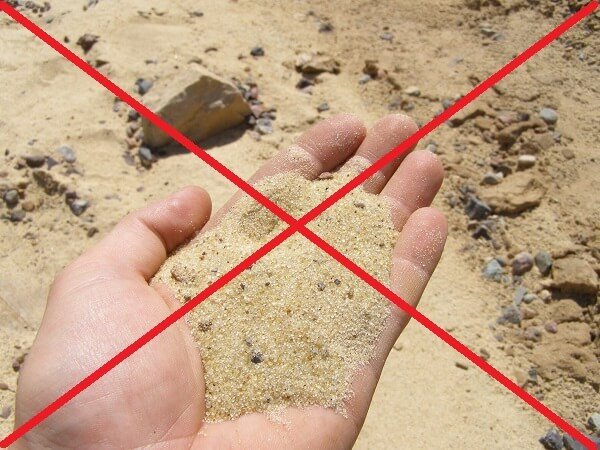
There are systems that use sand as a grow media but I do not recommend it for beginners. Growing plants in sand are called iAVS systems or simply, sandponics.
- Organic matter
Organic substances can seem like a good idea. However, items like coconut coir and similar degradable products will degrade in your system. This will create pockets of decomposing waste; damaging the nitrifying bacteria’s ability to do their jobs.
In addition, the decomposing matter can be sucked into your pipes and filters, damaging them and blocking the water flow for your plants.
Here’s a couple of extra tips to help when establishing your aquaponics system and its grow media:
- Leave two inches of dry media to avoid algae growth
The recommended depth of your grow media is 12 inches. However, you should add an extra two inches on top of this. This will greatly reduce the likelihood of algae or fungal growth. So, having 12 inches of wet media that’s flooded and drained and 2 inches of dry media that blocks sunlight from reaching the wet grow media.
- Clean the grow media once a year to remove fish waste
If you have correctly sized your system you should only need to clean out your growbeds once every few years. However, Hobbyists oftentimes overstock their tanks and therefore need solid filtration.
Solid filtration or solid separators can catch settable solids but they cannot catch suspended solids. That is when a growbed with worms or a mechanical filter comes in handy.
If the growbed get’s clogged up, anaerobic zones will develop and the nitrifying bacteria will die. This will reduce the nitrification rate of your system and the pH will rise. That is how you can spot a clogged up growbed without digging into it.
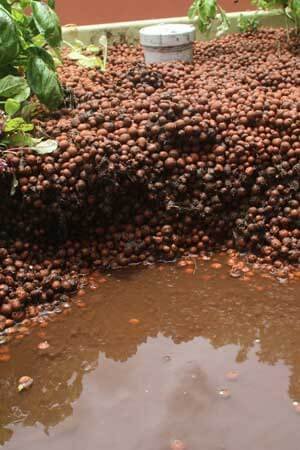
Agitate the grow media and flush it several times to ensure the fish waste is gone and your system is clean; ready to produce more plants for you.
Choosing the right aquaponics grow media will make a difference to your success rate; you’ve got everything you need to know to choose and start the ball rolling!
- Adding worms to your grow media
Worms will take care of solids breakdown in your growbed. They will eat solids waste and excrete the minerals it contains, in turn, the plants take up the minerals.
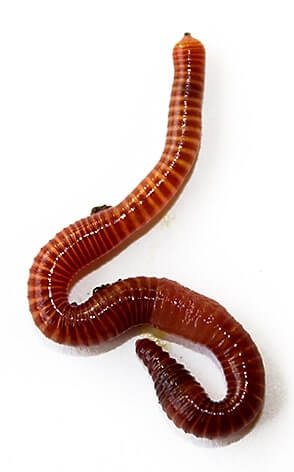
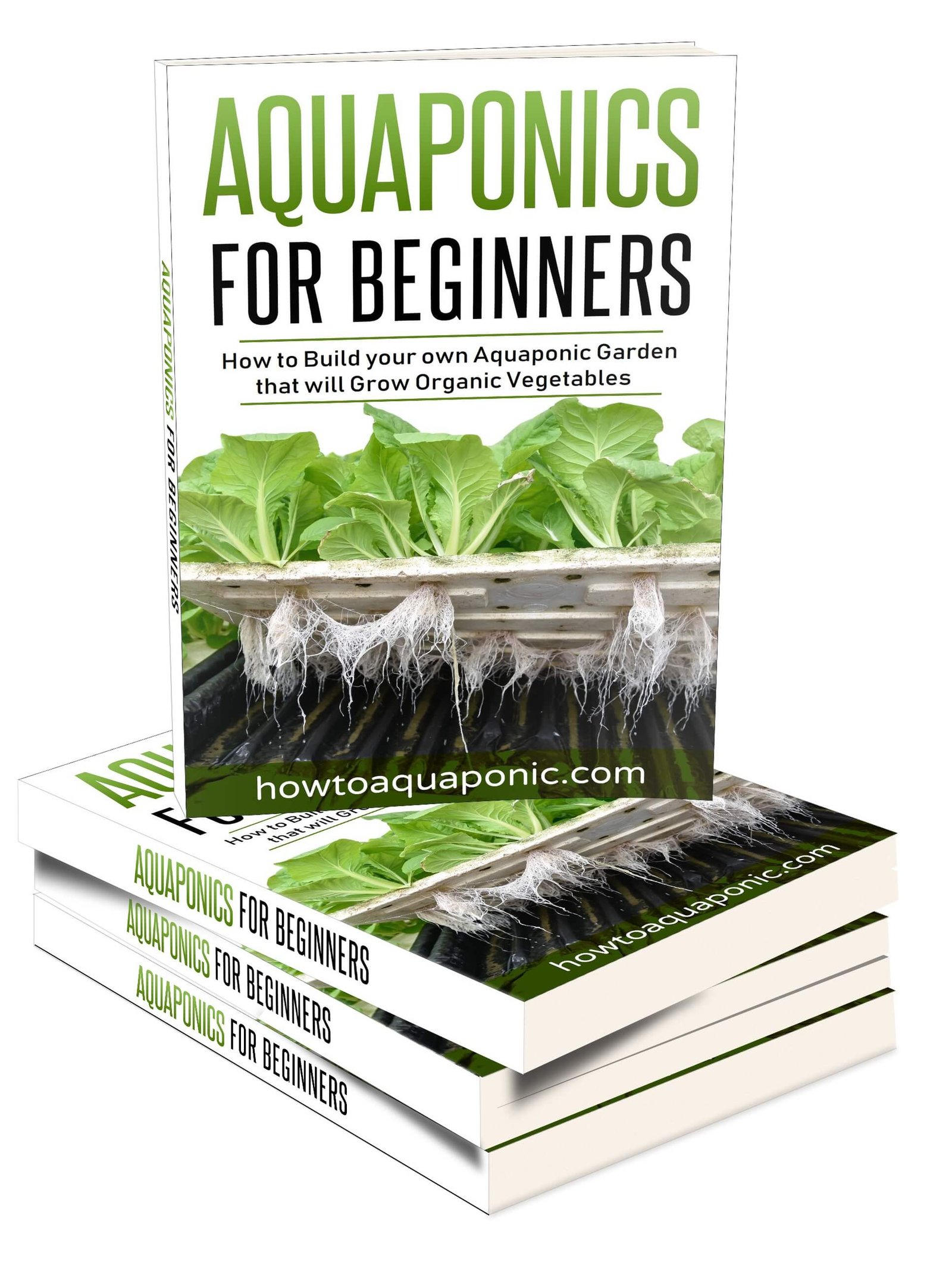 I have written a book that contains all the information you need to get started with aquaponics.
I have written a book that contains all the information you need to get started with aquaponics.
Don’t be the person that makes painful mistakes during your first aquaponics build!
It has 265 pages filled with information about aquaponics. It’s available in paperback or eBook format.
You can buy it here on Amazon.com

Nick loves building, managing and giving others advice on aquaponics. He created this website to do just that. He is the author of Aquaponics for beginners. If you got a question contact him here or read more on the about page here.
